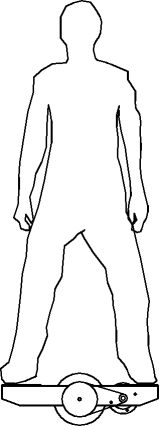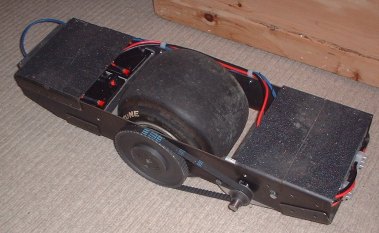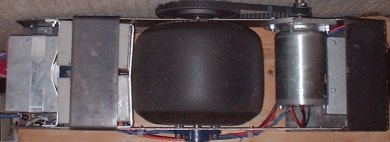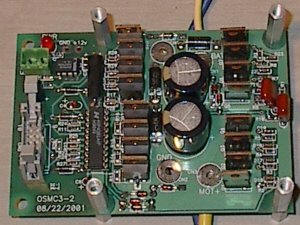
8th March 2007
I have put together this page to document a one-wheeled balancing scooter / skateboard that I've just finished. It's the culmination of several iterations over the last few years, and definitely my favourite.
It's very similar to a snowboard to ride, requiring no user input other than the movement of your body mass. Leaning forwards and backwards controls the velocity and moving your weight from heal to toe controls the turn radius. It's easy and very intuitive to ride.
I've put together a video on youtube of me and some friends riding it:
http://www.youtube.com/watch?v=HGbbag9dklU








